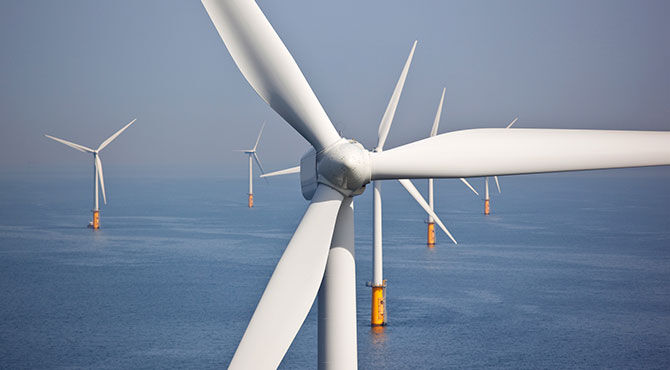Scotland hosts world’s first floating wind farm
Electricity production has begun at the first floating wind farm off of the coast of Scotland. The new design has been hailed as an, ‘exciting development for renewable energy’.

Boost for renewable energy innovation in Scotland
At the official opening ceremony, Scotland’s First Minister Nicola Sturgeon said Scotland had now positioned itself as a “world centre for energy innovation”.The £200 million project centres on five floating turbines, each 253 metres tall and anchored to the seabed by cables, covering about four square kilometres of the North Sea. Statoil and Masdar will also install an associated Batwind system, a 1-megawatt hour lithium battery storage facility for offshore wind.Hugh McNeal, chief executive of industry body RenewableUK, said the “extraordinary Hywind project is being watched around the world, as floating offshore wind has the potential to be exported globally”.Related stories:
- Green light for 'next generation' UK wind farm
- Talent and technology: creating a modern, mobile workforce
- New technology dominates opening of ‘offshore Europe’
He added, “Floating offshore wind opens up new opportunities for us to build offshore wind farms in much deeper waters than before, where wind speeds are even higher.”Ms Sturgeon described the project as “an exciting development for renewable energy in Scotland” which would help the country meet its “ambitious” climate change targets.She added, “I’m pleased Scottish suppliers have contributed to the Hywind project from the development through to the production phase and are still involved to investigate long-term potential for floating wind.”
First step in global expansion of offshore windfarms
Irene Rummelhoff, executive vice president of new energy solutions for Statoil, said floating turbines could be sited in areas with a water depth of up to 800 metres, which have so far been out of bounds for offshore wind.“The lessons from Hywind Scotland will pave the way for new global market opportunities for floating offshore wind energy,” she said. “Through their government’s support to develop the Hywind Scotland project, the UK and Scotland are now at the forefront of the development of this exciting new technology.“Statoil has an ambition to reduce the costs of energy from the Hywind floating wind farm to 40 to 60 euros per megawatt-hour by 2030.“Knowing that up to 80 per cent of the offshore wind resources are in deep waters where traditional bottom fixed installations are not suitable, floating offshore wind is expected to play a significant role in the growth of offshore wind going forward.”Claire Mack, chief executive of Scottish Renewables, said, “Hywind’s presence in Scottish waters is a reminder that, as the windiest country in Europe, and with some of the deepest waters and most promising offshore wind sites, Scotland is perfectly placed to capitalise on floating turbine technology.”For related news and features, visit our Technology section.Relocate’s new Global Mobility Toolkit provides free information, practical advice and support for HR, global mobility managers and global teams operating overseas. Access hundreds of global services and suppliers in our Online Directory
Access hundreds of global services and suppliers in our Online Directory
©2025 Re:locate magazine, published by Profile Locations, Spray Hill, Hastings Road, Lamberhurst, Kent TN3 8JB. All rights reserved. This publication (or any part thereof) may not be reproduced in any form without the prior written permission of Profile Locations. Profile Locations accepts no liability for the accuracy of the contents or any opinions expressed herein.






































